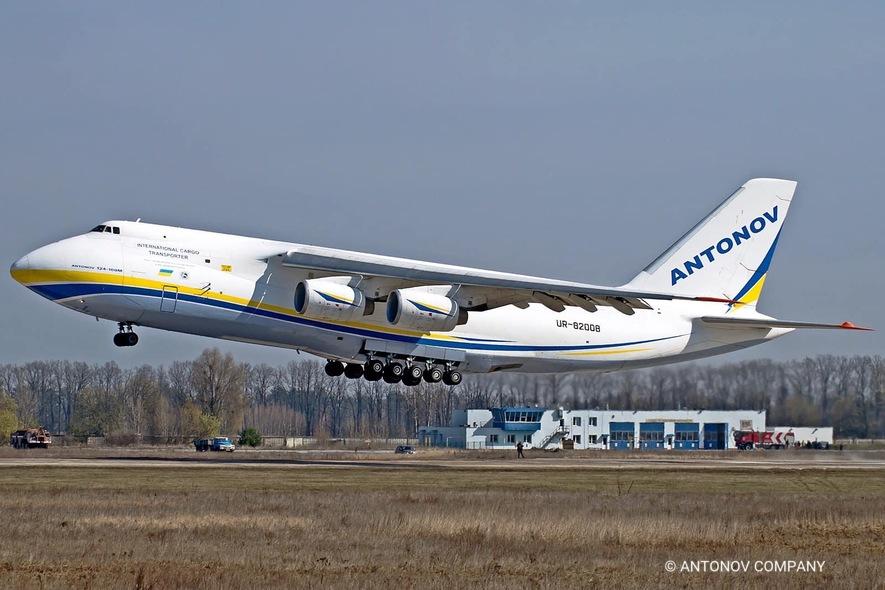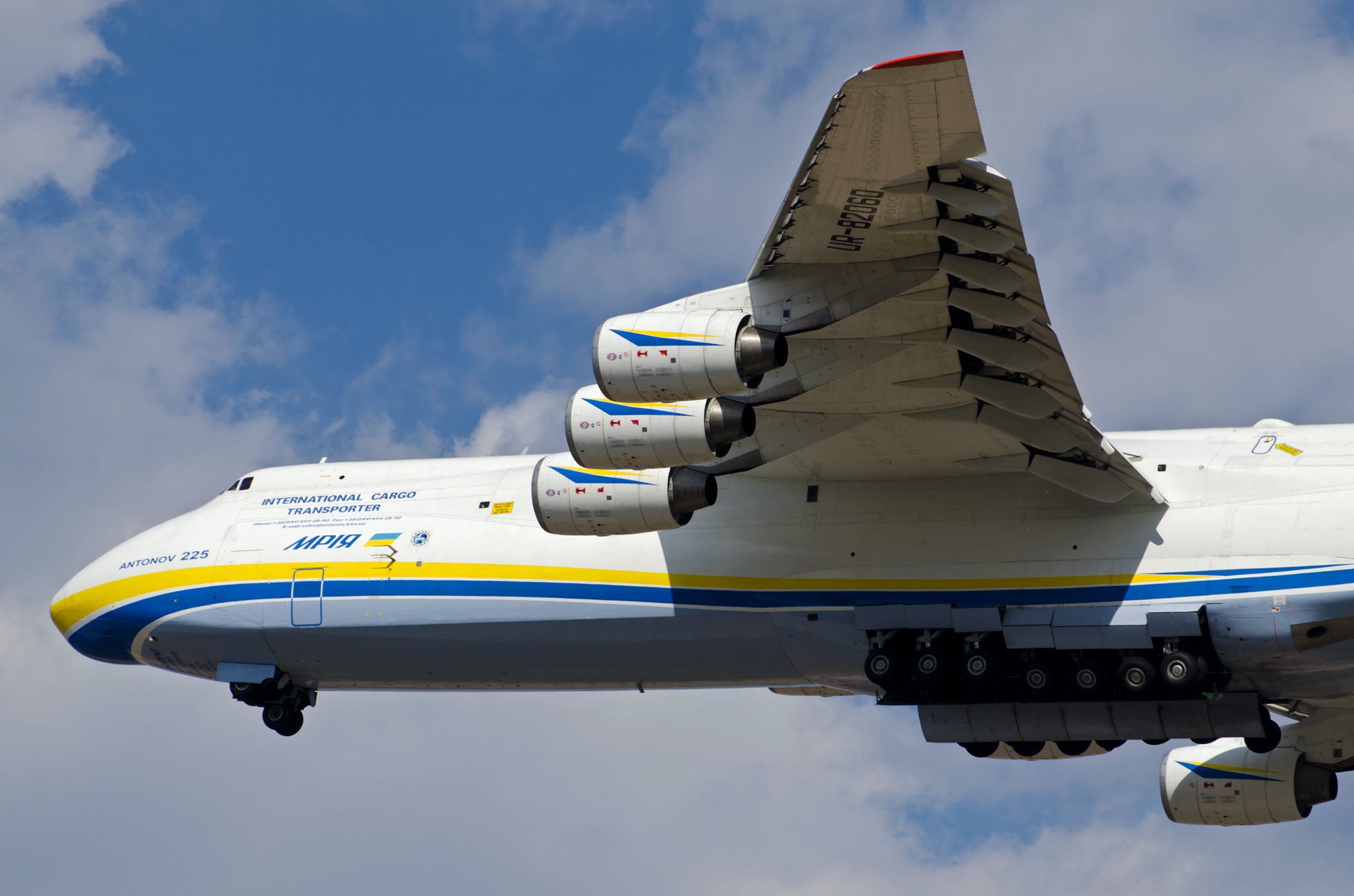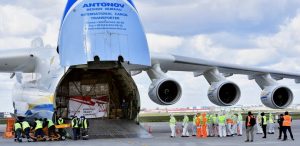
On April 14, ahead of a video conference by NATO Defense Ministers, NATO Secretary General Jens Stoltenberg commented on Antonov aircraft - AN-124 Ruslan and AN-225 Mriya, both of which are currently engaged in transporting and delivering medical supplies all across the globe.
“Ukraine is assisting NATO members. NATO uses Ukrainian aircraft to provide strategic transportation ... Ukrainian aircraft demonstrate how NATO has been cooperating with Ukraine to provide air services to NATO allies. These aircraft are very important today, as they transport medical equipment from China to NATO member countries in Europe.
I’ve seen these Ukrainian planes. They are enormous!”
How is the delivery of masks and medical equipment to NATO countries beneficial to Ukraine? What has the coronary crisis changed for Ukrainian carriers? How have Ukrainian cargo aircraft become effective flying advertisements for Ukraine across the globe?
The Ukrainian Mriya (Dream)
The AN-225 Mriya is the largest transport aircraft in the world. It was designed and manufactured by the Kyiv-based Antonov Design Bureau in the late 1980s to transport the Energiya carrier-rocket and Buran space shuttle. After the collapse of the Soviet space program, the Antonov Company launched commercial service of this aircraft in 2001.
The giant aircraft is mainly used to carry oversize loads, such as generators or blades for wind farms. The record weight in one flight is 253.8 tons.
The Antonov AN-225 Mriya is one-of-a-kind. Only one airframe was ever completed during the Soviet era. A second airframe was also commissioned but was never completed. Since its maiden flight on December 21, 1988, the AN-225 has delivered heavy and outsize shipments across the globe. It is scheduled to remain in service until at least 2033.
For the past year and a half, Mriya has been undergoing maintenance and modernization. Today, due to the coronavirus pandemic, the demand for large freight deliveries has grown rapidly, and the Antonov fleet is now fully booked.
In addition to Mriya, Antonov Airlines also has a fleet of Ruslan AN-124 aircraft, which are the largest serial cargo aircraft in the world, carrying a load of 120 tons.
Ukrainian aircraft saving lives
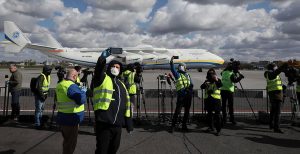
On April 14, Mriya made its first flight, delivering medical supplies to Poland.
More than 80,000 people watched the giant aircraft land in Warsaw on the airline’s Facebook page.
“This is Mriya’s first visit to Poland, and of course, everybody was quite excited. The fact that the Polish Prime Minister gave a press briefing standing before our aircraft and our Ukrainian colours sent a strong message to the world. So many people were surprised that Ukraine was capable of building such aircraft!” stated Ukrainian Ambassador to Poland Andriy Deshchytsia.
Four days later, Mriya arrived at the Paris-Vatry Airport, France, loaded with medical supplies from China, and recently returned to Ukraine. New flights are scheduled very soon.
The Antonov Company announced that Mriya usually carries out twenty deliveries per year, but this year, orders and future schedules show a record number of flights.
“Today, five Ruslan planes and Mriya are engaged in the transportation of medical equipment from China. Since late March 2020, these aircraft have already delivered about 2,000 tons of humanitarian supplies to Europe, the US and the Middle East.”
The United States now has the highest number of infected people, so Ukrainian carriers have started flying more regularly to the American continent.
“The next series of flights from China to different American cities took off on April 22. The airplanes landed in Orlando, Houston, Washington and Los Angeles. The AN-225 Mriya will be included in this fleet in May,” reported the Antonov press service.
Early on April 27, the AN-225 Mriya arrived in Leipzig, Germany with a medical cargo from China. German Defense Minister Annegret Kramp-Karrenbauer met Ukraine’s Mriya at the airport.
“Today, the world’s biggest transport aircraft delivered over ten million protective masks from China to Germany, which is very important. This is part of a total batch of 25 million protective masks,” Kramp-Karrenbauer said.
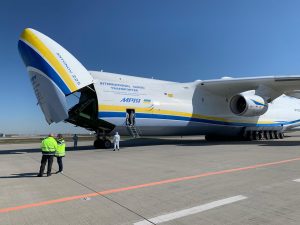

It is important to note that many of these medical flights continue to deliver medical supplies and equipment to NATO countries… and this is not accidental.
Ukraine & the NATO Alliance
The medical flights started in March, when the Ukrainian Ruslan delivered masks and tests to the Czech Republic. Ambassador of Ukraine to the Czech Republic Yevhen Perebyynis recalls the memorable event:
“Ruslan’s first arrival was clearly the event of the week in the Czech Republic. It arrived at Pardubice Airport, where it was welcomed by members of the government and the prime minister, and all the media wrote about it in detail. This aid was critical for the Czechs. Although some politicians said that it was NATO’s aid to the republic, and not Ukraine’s, and that it was paid for, most Czechs saw it as a sign of the particularly good relations between our two countries.”

This flight, as well as many of the following flights, was performed by the Ukrainian carrier under the Strategic Airlift International Solution (SALIS) program under the auspices of NATO and the European Union.
SALIS provides assured access to five Ukrainian AN-124 aircraft (mission-ready within a few days in case of crisis) in support of national, NATO and European Union (EU) operations. Nowadays, besides the ongoing NATO and EU missions and operations, SALIS plays a vital role in helping some of the participating nations to transport urgent medical equipment from overseas to tackle the COVID-19 crisis.
“The program has used both Russian and Ukrainian aircraft for some time, but today, it’s Ukraine that meets all the demands of the SALIS program. This is an accessible solution for countries that don’t have the resources for cargo transportation, but it’s a temporary solution,” explains Ukraine’s Deputy Prime Minister for European and Euro-Atlantic Integration Vadym Prystaiko.
The consortium consists of nine NATO Allies: Belgium, the Czech Republic, France, Germany, Hungary, Norway, Poland, Slovakia and Slovenia.
Under the terms and conditions of the contract with the NATO Service and Supply Agency (NSPA), the Antonov Company does not comment on SALIS transportation statistics or schedules. However, the NSPA website confirms that some of the AN-124 flights were carried out under this contract:
“Poland, as the Czech Republic or Slovakia, is currently using its flying hour quota to airlift urgent medical protective equipment from China and tackle the coronavirus crisis.”
As well as the AN-125 Ruslan, the current contract also provides for access to Ukraine’s AN-22, AN-225 Mriya and Il-76 aircraft.
Antonov’s current contract with the NSPA was concluded in December 2018 and will remain in effect until December 31, 2021, after which it may be renewed. But, Ukraine is preparing for closer cooperation on air transport with the Alliance. Vadym Prystayko believes there is much more at stake:
“At present, one AN-124 aircraft under contract is based in Leipzig. Other aircraft may be used as needed.
NATO is developing its strategic transportation resources, and this is where Ukraine comes in - from participating in the interim program to becoming a permanent NATO partner. The fact that SALIS chose Ukraine shows that we are seen as an important strategic partner.”
NATO Secretary General Jens Stoltenberg echoed Vadym Prystayko’s words:
“We are pleased to have such a strong partnership with Ukraine. This pandemic is a challenge for us all, and we must respond together.”
There is indeed great potential for Ukraine’s further cooperation with the Alliance, and it should remain so after the end of this pandemic.
Earlier, NATO had used not only Antonov aircraft, but also aircraft from Russia’s Volga-Dnepr group. However, after the occupation of Crimea, the Alliance suspended all cooperation with the Russian company, and Ukraine is now considered a reliable alternative partner. NATO simply does not have aircraft that can provide the same transportation efficiency at a similar cost.
The cost of Mriya
So, Ukraine has these powerful flying machines, but why can’t the world just use ordinary passenger Boeings (the seat having been removed, of course) to transport supplies during the pandemic? The key issue here is not the size, but the financial feasibility of flying the Mriya.
The AN-225 is used exclusively for the transportation of large oversize cargo, which cannot be carried by other aircraft or other means of transport during a crisis. Such aircraft are reserved by other companies or states not because it is profitable, but because there is no other option.
The exact cost for a Mriya flight has not been made public, but experts say it may amount to as much as US$ 30,000 per hour, and in general, a flight can cost anywhere from US$ 650,000 to US$ 1 million, or even more, depending on distance and weight. An anonymous source involved in this process reported that the Kyiv-Shanghai round trip costs about US$ 1 million. Aviation expert Bohdan Dolintse explains:
“Of course, it would be financially profitable to use other types of aircraft, such as Boeings. Medical supplies can be loaded separately; they can be broken up into five or six aircraft and carried to any destination. But, today, most carriers are already booked and those that are free have been immobilized.
Yes, there are a lot of free passenger planes in Europe, but they’ve been immobilized for some time now, and putting them into service again and resuming cargo flights would be neither quick nor cheap. These would be individual flights, not regular ones, so ordering them from regular carriers would probably be more expensive.”
Special planes for special times
The greatest demand for Ukraine’s Antonov aircraft comes during catastrophes and crises.
In an interview, Vitaliy Shost, Deputy Director of Antonov Airlines stated that the last important request for Ukrainian aircraft dated back to 2018, when destructive hurricanes struck the United States. In “quiet” years, Antonov carriers are usually restricted to fewer flights.
Today, Mriya and Ruslan have become flying symbols of Ukraine, and their arrival at and departure from distant cities inevitably draw national and international media and television crews.
[embedyt] https://www.youtube.com/watch?v=L8BgLatrrIk[/embedyt]
In these special times, when fighting the pandemic has become a key concern for most governments, Ukraine’s giant blue-and-yellow carriers roar across the skies, delivering the essentials. Ukraine has the unique opportunity to prove itself as a country making a significant contribution to saving the world from coronavirus. Ambassador to the Czech Republic Yevhen Perebyynis underlines that Ruslan’s arrival in the Czech Republic aroused great public interest in the aircraft, in Ukraine’s aviation industry, and in Ukraine itself.
One of the key conditions for membership in NATO is the agreement that NATO expansion will “promote security in the North Atlantic region”. Thus, Ukrainian officials and diplomats in charge of Euro-Atlantic integration are constantly being asked: “What can Ukraine do to help the Alliance?”
The past few weeks have provided a clear and unequivocal answer. The fact that medical flights are being primarily directed to NATO member states is an added bonus for Ukraine, which is seeking to gain membership in the Alliance as part of its national security program.




